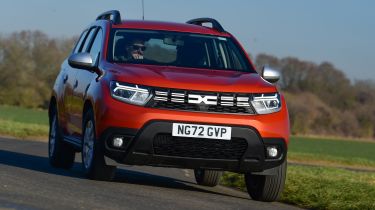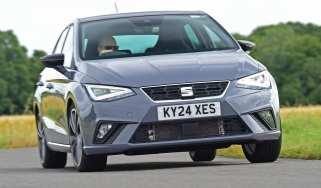Dacia Duster (2017-2024) - Engines, performance and drive
The Duster focuses mainly on delivering comfort, while being reasonably economical and rather good off-road

The Dacia Duster doesn’t offer razor-sharp dynamics or strong performance, but that’s not really the point of this kind of vehicle. Besides, the Duster’s talents lie elsewhere.
The Mk2 Duster sits on the same platform as the previous model: a stretched version of the Nissan Juke’s underpinnings. This makes it quite an old car underneath, and it does suffer from a combination of a fair bit of body roll and dull, lifeless steering. The result is a vague and detached driving experience, and its inadequate soundproofing means the Duster can be a tad noisy.
But that’s where most of the problems end, because the light steering makes it easy to manoeuvre around town, while the raised driving position gives a commanding view of the road ahead. However, during our test, we found the car's basic architecture beginning to show its age, with a noticeable amount of vibration felt through the steering wheel and pedals, while there was too much wind noise from around the A-pillars.
Otherwise, the Duster is a pleasant car to drive. A six-speed manual gearbox is fitted as standard to all but the 148bhp petrol-engined 4x2 model. The six-speed dual-clutch auto works smoothly enough, although it will sometimes choose to hold onto a gear when you'd prefer a higher ratio.
0-62mph acceleration and top speed
There are two TCe petrol engines to choose from: a 1.0-litre three-cylinder or a 1.3-litre inline-four. The larger 1.3-litre unit is our pick of the range as it’s barely any less economical than the smaller three-cylinder, but is far smoother, particularly at idle. It’s more powerful too, producing either 128bhp or 148bhp, which is enough to provide perfectly adequate performance.
The more potent TCe 150 unit will propel the Duster from 0-62mph in 9.7 seconds, giving the SUV the clout to take on models costing several thousand pounds more. Meanwhile, the TCe 130 takes 10.6 seconds to complete the same benchmark sprint.
For those unconcerned with extra power, the entry-level 1.0-litre petrol engine produces 90bhp and takes 13.1 seconds to reach 62mph, so it feels slightly sluggish.
The slightly unconventional option of the Bi-Fuel LPG system provides an alternative to petrol power. This comprises a 1.0-litre turbo three-cylinder engine that can run on either petrol or LPG. The Duster TCe 100 Bi-fuel produces 99bhp in all, and takes 13.8 seconds to get from 0-62mph.









